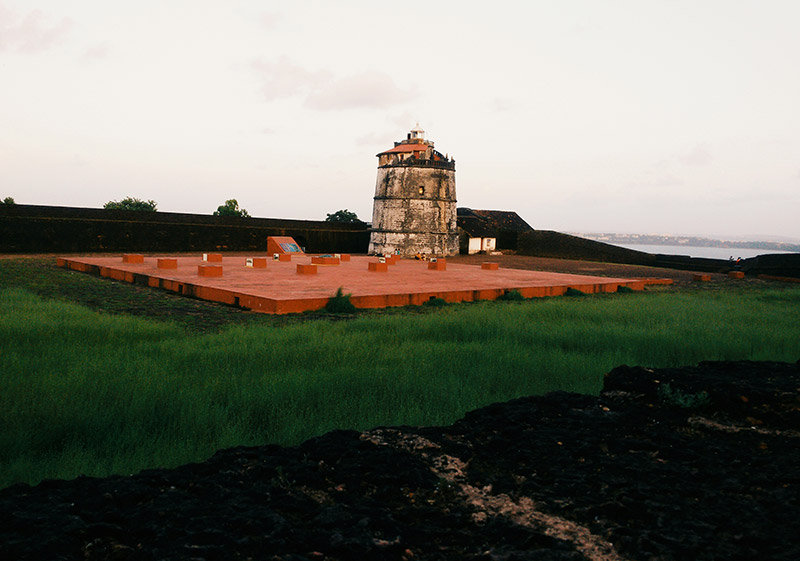3 mins December 06, 2019
At this time of the year, or pretty much any time of the year, Goa is associated with beaches, fun, and parties. But the essence of India’s smallest state lies in its heritage and culture. So if you’re headed to Goa this Christmas,
spare a couple of hours to visit Fort Aguada.

Now accommodating a luxury hotel, the fort – or what remains of it – stands on a rugged headland that looks out to the Arabian Sea. Built a century after the Portuguese took control of Goa in 1510, the fort is situated on Sinquerim
beach at the mouth of the Mandovi River.
Even though it took only three years to build, from 1609 to 1612, the fort was impregnable and is the only Portuguese fort that could not be breached or conquered during their 450-year-long rule in India. And here’s why. The mighty fort
walls embrace the entire peninsula at the mouth of the river and it boasted around 100 cannons. It also had an enormous cistern that could store over 2,300,000 gallons of water.
Built to guard against the enemy – essentially the Dutch and the Marathas – the fort’s walls are 5 metres high and 1.3 metres wide. The fort takes its name from ‘agua’ meaning ‘water’, thanks to a freshwater
spring inside that supplied water to the crews of passing ships.
But the showstopper even today is the four-storey lighthouse that was built in 1864. While it once used oil lamps to send out a beacon of light once every seven minutes, it was abandoned in 1976. Before the lighthouse was built, ships were guided
to a safe harbour by massive bonfires lit on the ‘Hill of Pilots’ above the site where the Church of Immaculate Conception now stands in Panaji.
[Also Read: The Croats of Goa]
Goa remained under Portuguese rule till 1961, and in the mid-20th century, during the administration of António de Oliveira Salazar in Portugal, a prison was built on the lower reaches of Fort Aguada. The prison was used to house protestors
who were demanding Goa’s liberation from the Portuguese. Now it serves as the state’s Central Jail and mainly houses individuals accused of narcotics-related offences.
On the way to the fort, you will see the church of St Lawrence, the patron saint of sailors. Its location is no coincidence. The Portuguese used to build churches near their forts to prevent the enemy from firing at close range!
Not much of Fort Aguada remains today, and a part of the property has been taken over by the Taj Group for a luxury hotel. But some of the fortifications and structures are still standing, and it is worthwhile visiting what does remain to experience
a slice of history that shaped the story of India.
So, the next time you plan a trip to Goa to soak in the many cultural and culinary delights, avail a Holiday Loan from Axis Bank to take care of all your travel needs. It offers amounts between Rs 50,000 and 15 lakh, with flexible repayment options
and zero foreclosure charges. And yes, don’t miss out on Axis Bank’s Dining Delights offers for deals and discounts at some of Goa’s popular restaurants.
Disclaimer: This article has been authored by Live History India Digital, a Mumbai based Digital Content Company. Axis Bank doesn’t influence any views of the author in any way. Axis Bank & Live History India Digital shall not be responsible for any direct/indirect loss or liability incurred by the reader for taking any financial decisions based on the contents and information. Please consult your financial advisor before making any financial decision.














